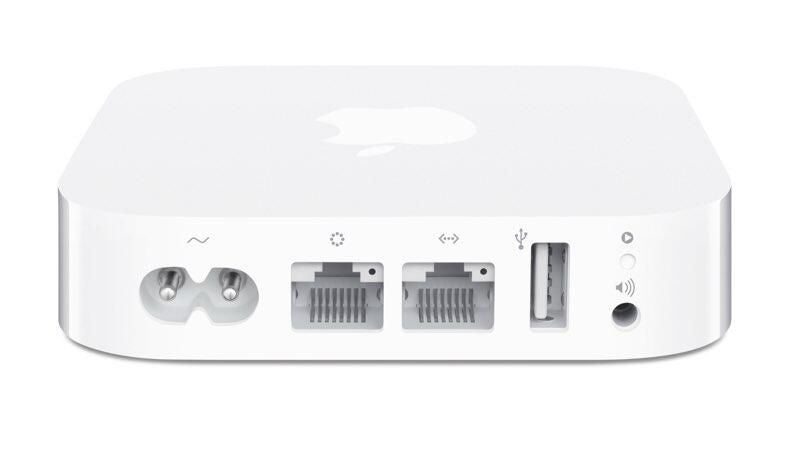
A single AirPort Extreme, while a capable small office wireless router, can’t always cover a SOHO environment’s entire footprint. Fortunately, Apple has made it easy to extend a single AirPort Extreme-anchored wireless network using one or more AirPort Express wireless access points (WAPs).
Offering dual-band 802.11n Wi-Fi performance, AirPort Express WAPs can transmit at 2.4GHz and 5GHz frequencies simultaneously. The 2.4GHz “g” networks boast better range, if slower speed, versus the 5GHz “n” networks, which possess shorter ranges of operation but significantly improved throughput. Thus, I use both and select the best network based on my location and the tasks I’m completing at the time. Surfing the internet when I’m farther away from the WAP makes g a good choice, as the 2.4GHz technology is faster than an ISP’s typical internet speed, but if I’m uploading numerous images or files to the cloud and I’m near the WAP, choosing the n network accelerates the transfer.
SEE: Hardware purchasing task list (Tech Pro Research)
There are a few ways to extend an existing AirPort Extreme-powered network using an AirPort Express (Figure A).
Figure A

You can connect an AirPort Express to the existing network via an Ethernet cabled connection. The AirPort Express possesses both an Ethernet WAN port, which can be used for this purpose (by configuring the AirPort Express to work in Bridge Mode using the AirPort Utility’s Network tab), as well as an Ethernet LAN port, which you can use to connect another device and a network switch. I’ve even deployed power over Ethernet adapters to connect an AirPort Express to an AirPort Extreme, in concert with a network switch that also connects an Apple TV, a security system, and other devices.
You can also connect the AirPort Express to the AirPort Extreme wirelessly. The popular method is to place the AirPort Express within radio range of the AirPort Extreme, Time Capsule, or even another AirPort Express. Then, use Apple’s AirPort Utility to configure the AirPort Extreme to join the existing network and extend the existing wireless network’s reach by powering up the AirPort Express, opening the AirPort Utility, clicking the Other Wi-Fi Devices button, highlighting the new AirPort Express, and following the onscreen instructions to accept the default configuration (of extending the existing network). The AirPort Express can be powered down and moved to a better location within the SOHO space once the configuration is enabled.
I’ve read about competing methods for joining an AirPort Express to an existing Apple router-powered network. Some observers recommend re-creating the exact same wireless network using the same security technology and wireless password. This is the simplest option and one that works well if you have many guests. Studying my Mac’s wireless operation using NetSpot, however, I noticed my Mac didn’t automatically switch to using the WAP closest to my machine and generating the strongest signal when I was frequently on the move. For this reason, I set up my SOHO environment using different wireless names that indicate the WAPs’ locations, which helps ensure that, when I’m stationary, I can select the best network connection easily without having to fire up a network analyzer to confirm signal strength.
